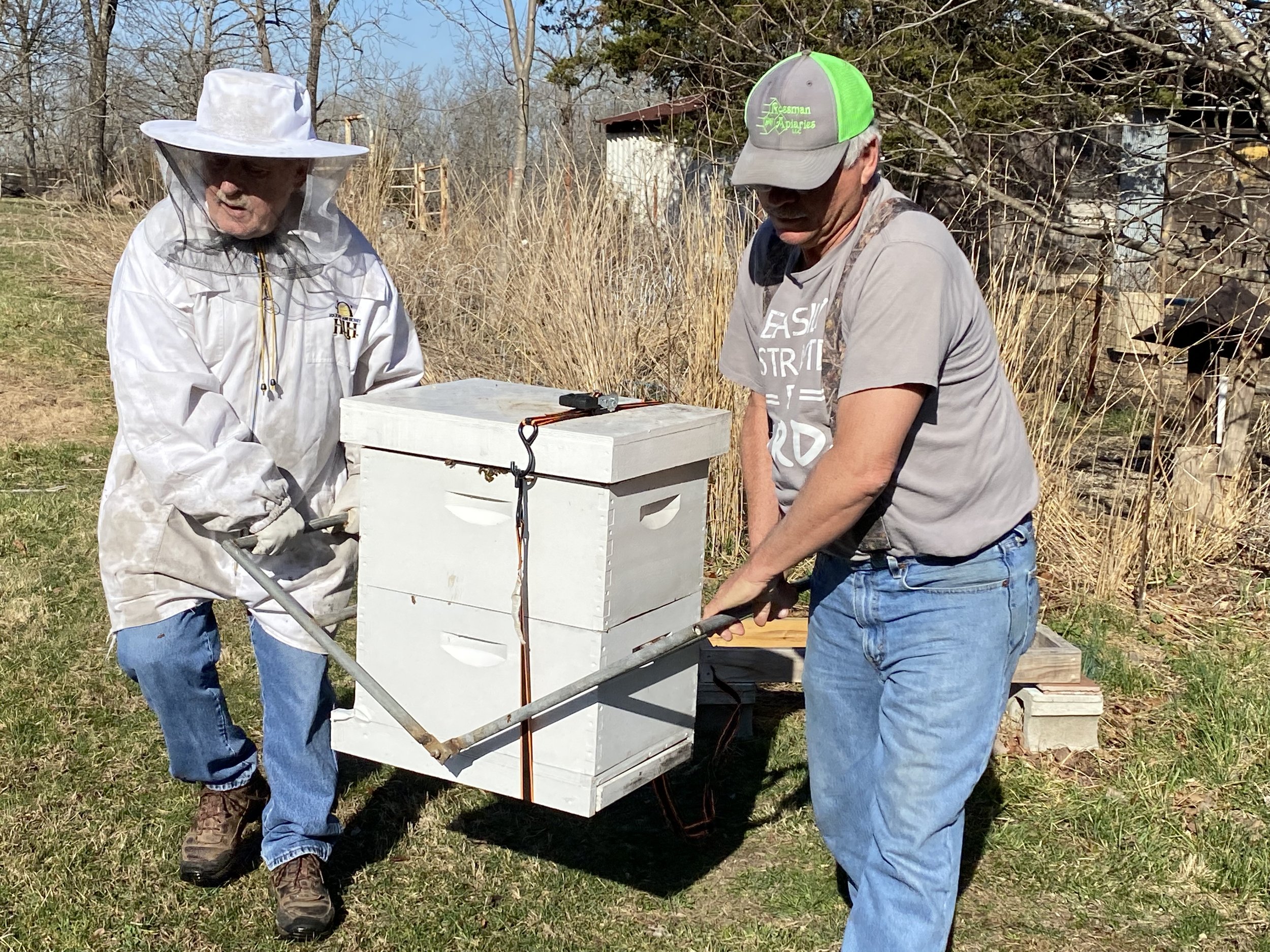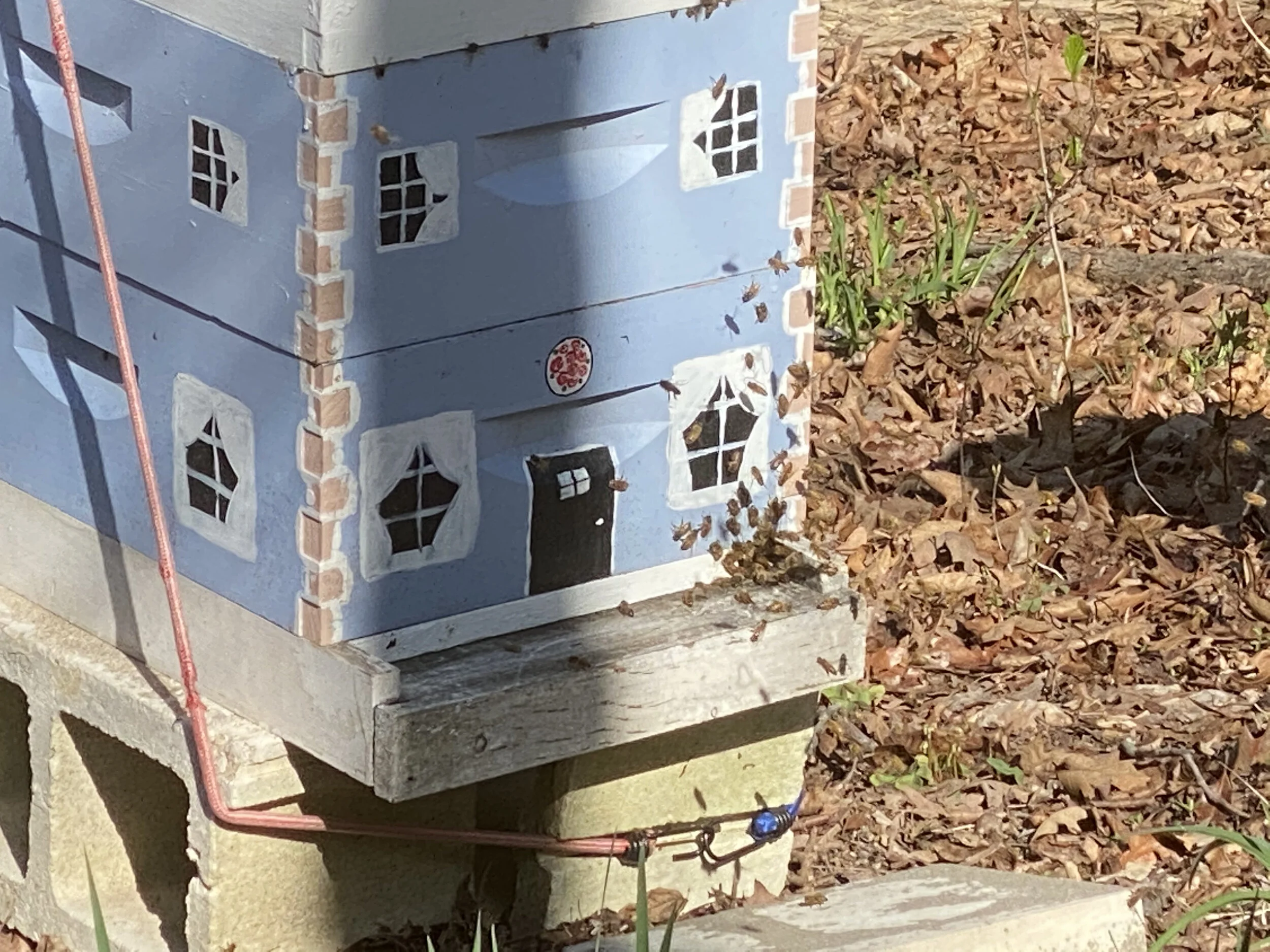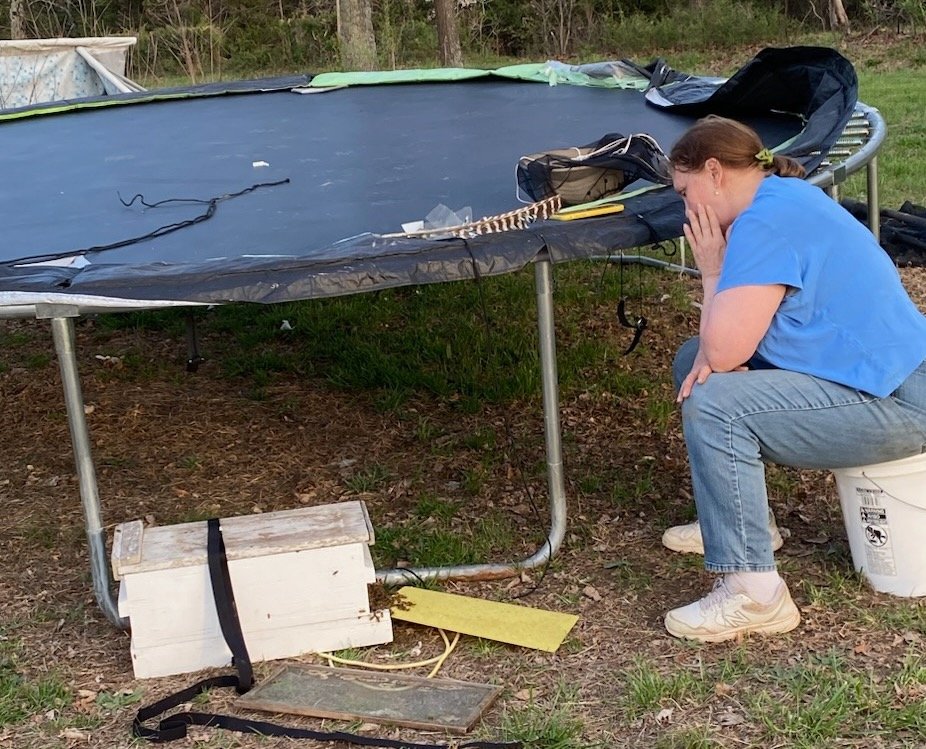April Beekeeping Chores
/A hive lifter, and a second set of hands, makes moving a hive easier. (Charlotte Ekker Wiggins photo
April Beekeeping Chores
Depending on weather, April can be an anxious time for beekeepers in USDA Hardiness Zone 6b where I live. Bees got an early start in February and aren’t waiting on beekeepers.
There are many traditional spring beekeeping chores including moving hives. The colonies are small so they are easier to relocate than later when there are significant higher numbers of bees. To safely relocate hives, beekeepers can use a hive lifter. It does take a second set of hands but saves the beekeeper’s back.
If you are interested in keeping bees, this is a good time to start, you may be able to find beekeepers who could use a hand and that’s the best way to learn. Start by reading a book such as A Beekeeper’s Diary Self-Guide to Beekeeping to get the terms down and understand the biology basics.
Some of the other typical April beekeeping jobs include:
Inspect colonies. Add small hive beetle traps with fresh lure in hive body corners opposite of each other. Then switch corners in the next box.
Pull together swarm-catching equipment.
Prepare nucleus colonies before getting new queens. Use these smaller hives to house your old queen in case the new queen is not accepted.
Have new boxes with frames ready to add to existing colonies.
Monitor weather for best conditions to split. If you want honey, split after the honey flow.
Blooming blackberry plants mark the beginning of the spring nectar flow. Do you have enough woodenware and frames on hand to add space?
For more beekeeping, gardening, cooking and easy home decor tips, subscribe to Garden Notes.














